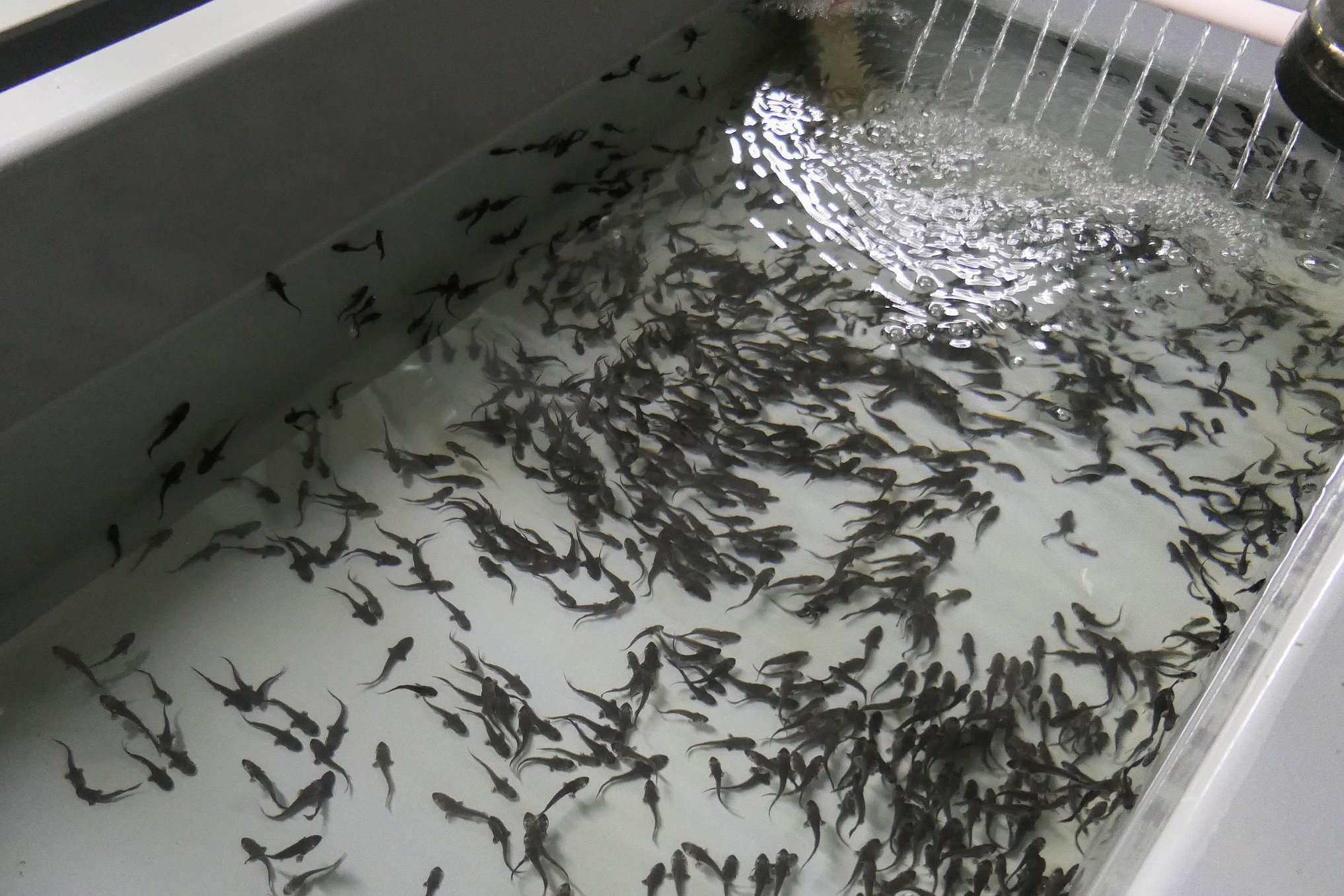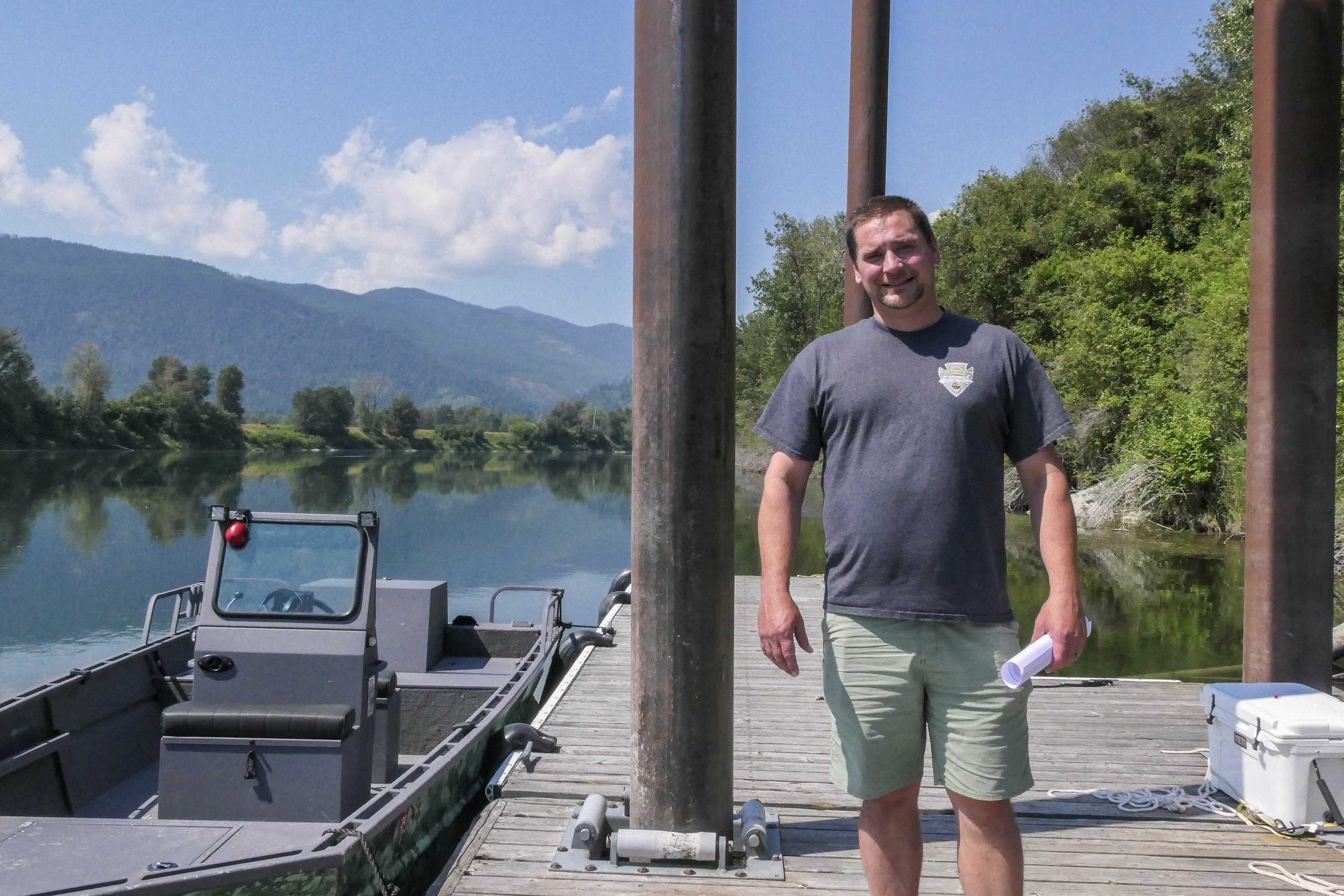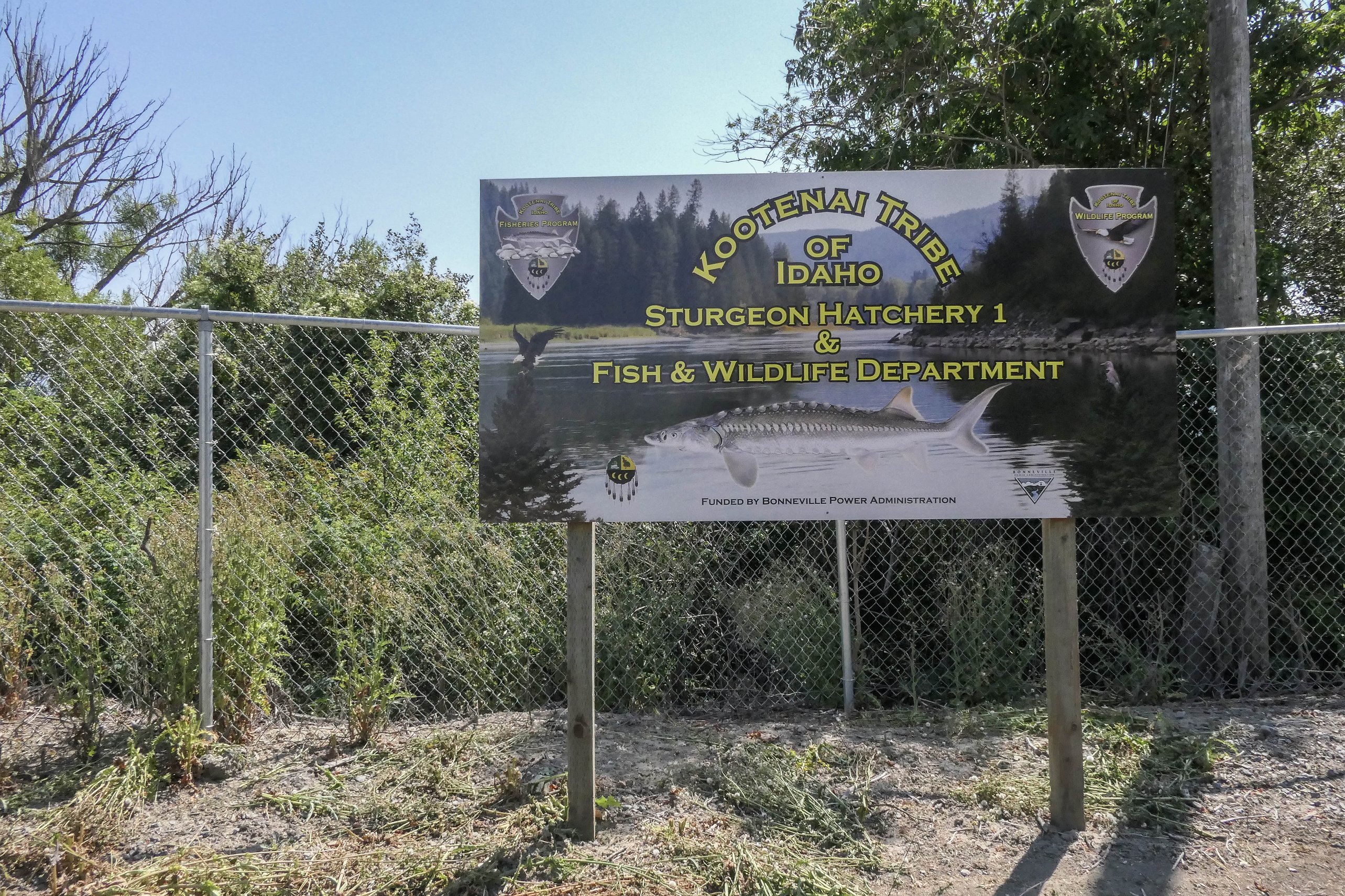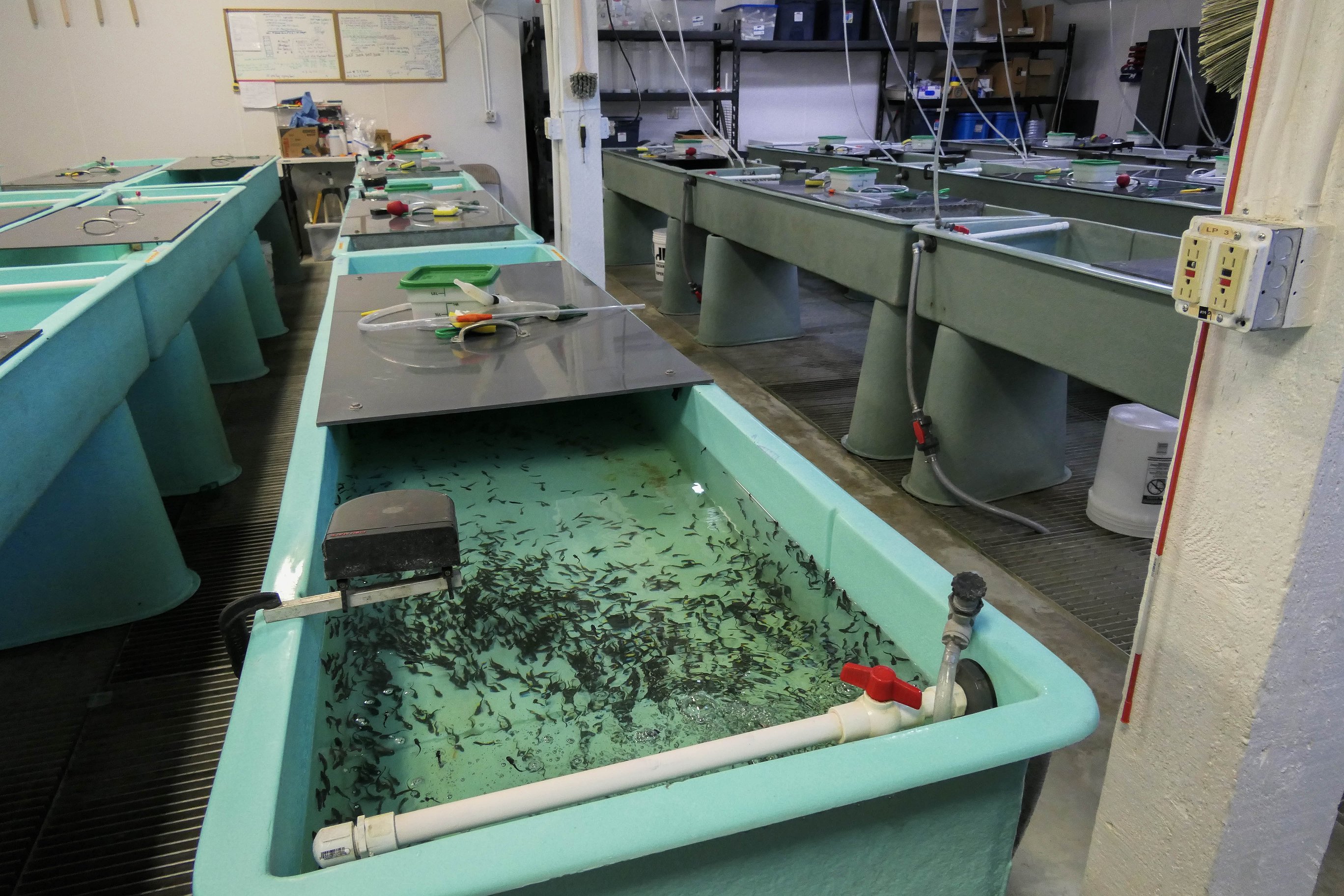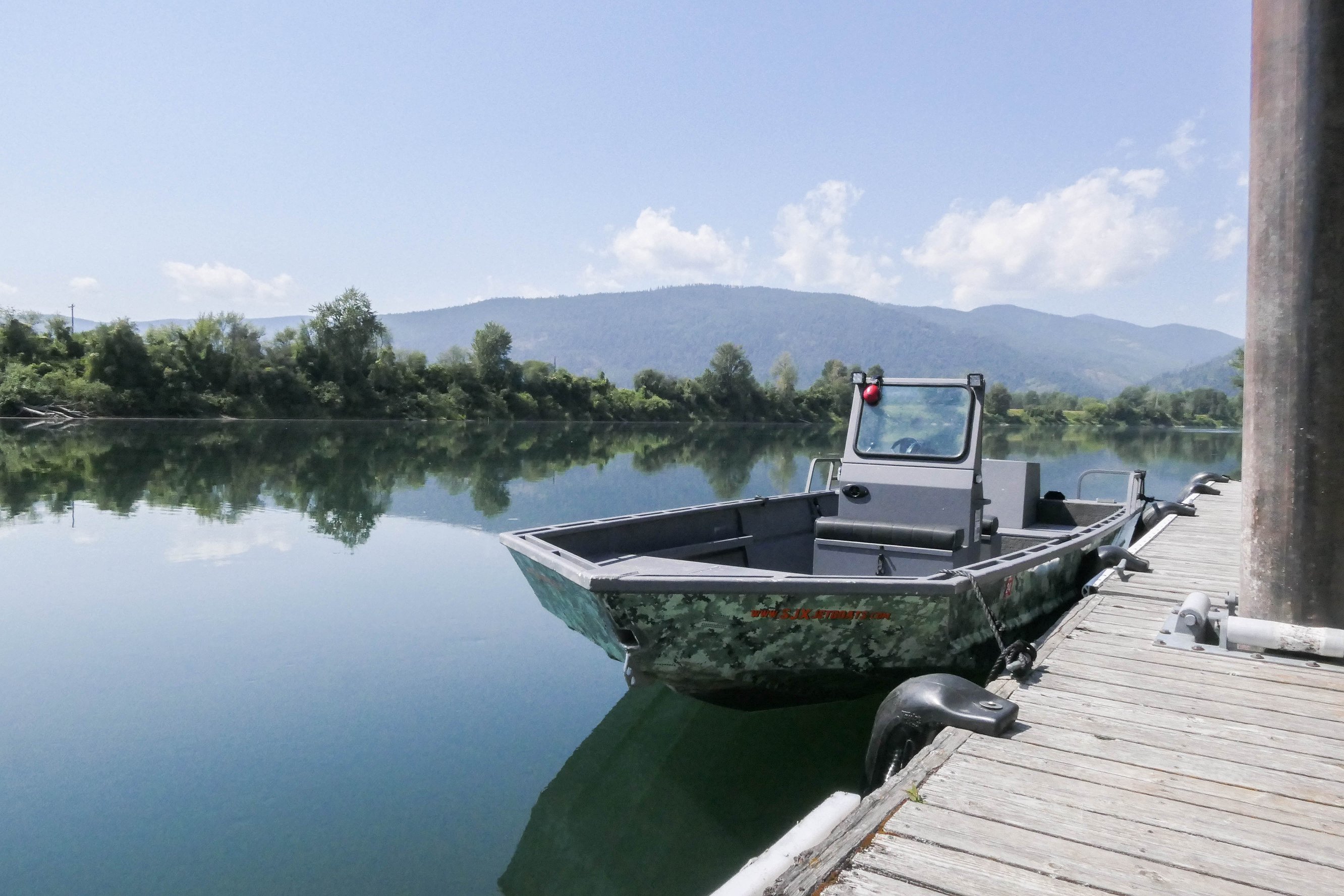Protecting Montana’s prehistoric sturgeon a ‘long game’
Ecologists describe the sturgeon as a living dinosaur.
The large fish, armored with bony plates, traveled throughout North American waterways for millions of years — their fossil record going back to the time of the tyrannosaurus rex.
Sturgeon are ancient and tough. If they weren’t as old, adapted and developed, they probably would not have continued to survive as time and human impact continue to affect the species’ population and habitat.
Despite its perseverance, the white sturgeon, native and unique to Northwest Montana for millions of years, was listed as endangered under the Endangered Species Act in 1994.
Thirty years later, the effort to save them continues.
THE KOOTENAI white sturgeon is only found in about 170 river miles of the Kootenai River. The landlocked population is notably smaller than elsewhere in its range, yet still have been reported to be as heavy as 350 pounds and 10 feet long in British Columbia’s Kootenay Lake.
Prior to the 1970s, there was very little information on sturgeon, according to Ryan Sylvester, a fisheries biologist with Montana Fish, Wildlife and Parks. The assumption was made that they were not an abundant fish based on how uncommon they were to catch.
At one point before they were listed as endangered, there were as few as 10 white sturgeon predicted to be in the Kootenai River, Sylvester said.
This population of sturgeon is one of 18 known land-locked populations that occur in western North America, including Montana, Idaho and Canada. According to Sylvester, the endangered designation is specific to the Kootenai cohort.
The fish have low recruitment rates, meaning there are rarely new additions to the population. They are also a unique population in Montana, where they live in a very limited range. Their unique habitat and lifestyles have prevented their numbers from increasing.
“Native fish in their habitats must be protected,” Sylvester said. “It's a long waiting game and I get the frustrations, but they are long-lived species.”
On the front lines of the restoration efforts is the Kootenai Tribe of Idaho. Since 1989, the tribe has been producing sturgeon in a hatchery and releasing them into the Kootenai River system.
“Had this program not been invented, we would be watching the wild population die out,” said Nate Jensen, the aquaculture program supervisor at the Kootenai Tribe of Idaho near Bonners Ferry, Idaho.
The tribe has a covenant with their creator to protect the environment, including the sturgeon, Jensen said. They saw sturgeon as the guides of the river, even shaping their canoes to reflect the fish itself.
The goal of the hatchery program, Jensen said, is to reestablish natural reproduction so the species can excel.
Sturgeon do not reach maturity until around 25 years old, meaning that their early-life-stage survival is important to the overall health of the population. Females also only spawn every three to seven years, varying yearly birth rates significantly.
The current wild population of white sturgeon consists of older, larger fish, and their numbers have continued to decline. In 2011, there were 2,072 white sturgeon, and in 2017 there were 1,744, according to the U.S. Fish and Wildlife Service.
The Kootenai River population of white sturgeon has declined over the past 50 years, with only about 500 adults remaining, according to the Montana Field Guide.
The tribe’s project is set up on the designated spawning grounds of the Kootenai River — a stretch of water where sturgeon migrate every year to lay their eggs. Of the thousands of eggs that will be created, less than 1% will survive their first year.
When the sturgeon was listed in 1994, the Fish and Wildlife Commission established a recovery team to devise methods to protect or increase the fish’s population. One issue, they found, was that the Libby Dam and other infrastructure seemingly lowered the sturgeon’s overall population.
“Almost no recruitment has occurred since Libby Dam began regulating the Kootenai River,” the state field guide states.
When the Libby Dam was first powered in 1972, the hydrograph was completely reversed, causing an unnatural ecological switch for river species, according to Greg Hoffman, a senior fishery biologist with the U.S. Army Corps of Engineers.
“There wasn't a thought back in the ’70s — this is right when the ESA was first written — people didn't consider effects on species when they were building hydropower,” Hoffman said.
The environment for sturgeon was flipped multiple times, he said.
The dam now operates to provide flows that mimic natural cycles, Hoffman said, and is required to follow operative biological opinions.
“We may never see sturgeon recruitment, it's not a rosy picture, but what we can fix and improve, and I think operationally we are… from the Libby Dam perspective, trying to operate at an ecological function. It's a key leg in the Columbia River Treaty,” Hoffman said.
The dam initially also limited the nutrients that reach the river below it, according to Jensen, which are key for the survival of young sturgeon. To counter the issue, officials have begun pumping nutrients into the water to replenish the effects of the dam.
Recovery of the white sturgeon is contingent on re-establishing recruitment, enhancing genetic variability and mitigating natural and physical alterations that limit the population. The White Sturgeon Recovery Plan, composed in 1999 by the federal Fish and Wildlife Service, recommends augmenting spring flows, implementing an aquaculture program and re-establishing suitable habitat conditions to raise numbers.
While the harvest of white sturgeon closed in 1979 in Montana and the federal listing of them 30 years ago helped prevent the species from extinction, “not much has changed over the past 40-45 years,” Sylvester said.
For them to be downlisted to threatened rather than endangered, increased recruitment is essential, Sylvester said.
“I see it being successful, but I don’t see an end to the hatchery system at this time,” Jensen said.
For downlisting to occur, increased recruitment and reproduction need to happen on a “meaningful scale,” Jensen said.
THE PALLID STURGEON is another endangered species of sturgeon in Montana. Listed in 1990, the pallid has also been declining over the past five decades; there are only about 200 adults remaining in the upper Missouri River. The fish are mainly found in Eastern Montana in the Missouri and Yellowstone rivers.
“It is a success that the pallid sturgeon has not gone extinct. Without the Endangered Species Act … we would not be here today without those efforts,” said Zach Stattuck, a native species coordinator with Montana Fish, Wildlife and Parks.
However, both fish, including the white sturgeon, which occupies a much smaller area than its neighboring pallid sturgeon, have an unforeseeable fate.
In 2019, the Fish and Wildlife Service revised the recovery plan into a process called “Recovery Planning and Implementation,” designed to be more time efficient and flexible. The current plan is called the Revised Recovery Plan for the Kootenai River Distinct Population Segment of the White Sturgeon.
The goal is to create a healthy population, one day allowing them to be delisted from the Endangered Species Act and placed back in state control, but in theory, the hope seems decades away.
“For a lot of folks, it's frustrating because at this point [the fish] are just now becoming sexually mature. Some of these fish are 30 years old and not yet sexually mature,” Sylvester said, pointing toward a lack of reproduction. Sturgeon can live for up to 100 years.
The fight to protect the white sturgeon, although currently localized in Northwest Montana, may continue to get attention across its home waters. Last year, groups in California petitioned to list the California white sturgeon as threatened under the Endangered Species Act. The petition states that the recruitment of California sturgeon has decreased since the 1980s, and reproduction has been impaired by water diversion and reservoir storage, similarly to the Kootenai population.
According to Sylvester, there are current hatchery and larval releases to expand the population underway to help the natural population reproduce on their own. If scientists can ultimately reach juvenile reproduction targets, he said, the downlisting or delisting process would be an option.
While decades of work and research have gone into protecting the endangered fish, scientists look to more decades of that work. It’s a long game, Sylvester said, but thanks to the Endangered Species Act and the protections it awards, there is some glimmer of a chance.
Watch and Listen to The Species of Concern Series of our Deep Dive podcast on the Daily Inter Lake You Tube Channel or on your favorite podcast app.
Reporter Kate Heston can be reached at kheston@dailyinterlake.com or 758-4459.








